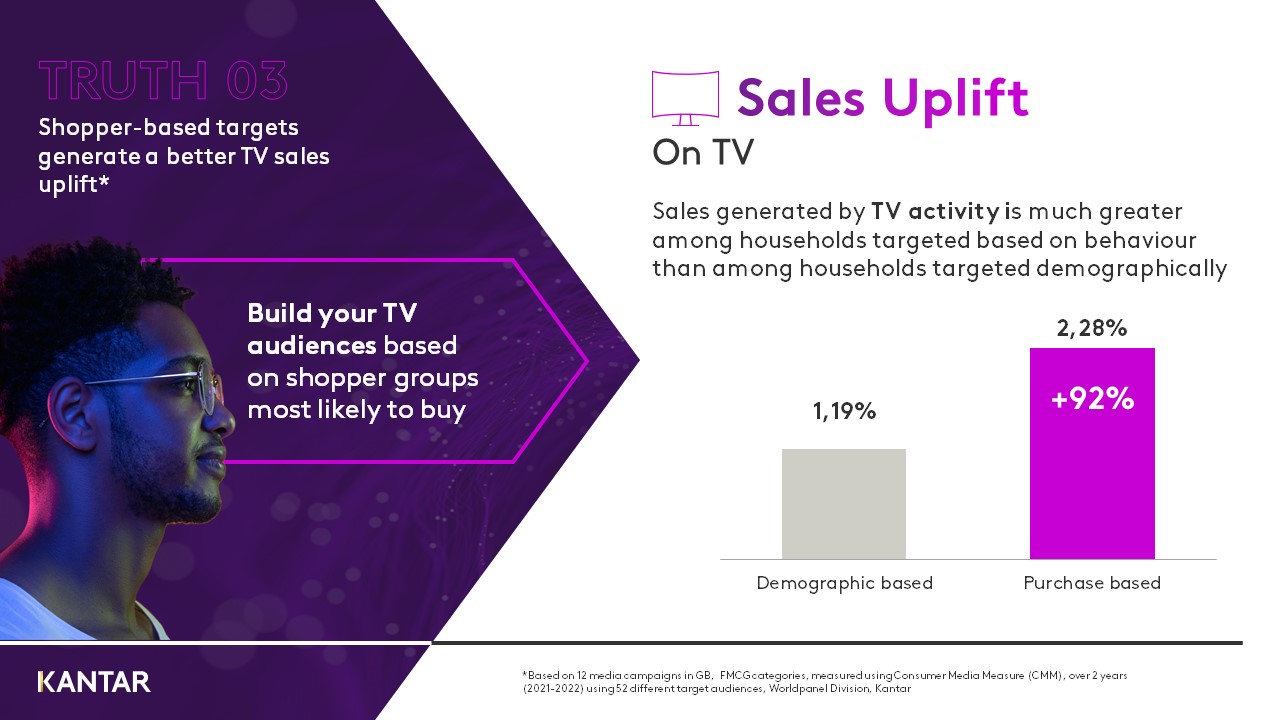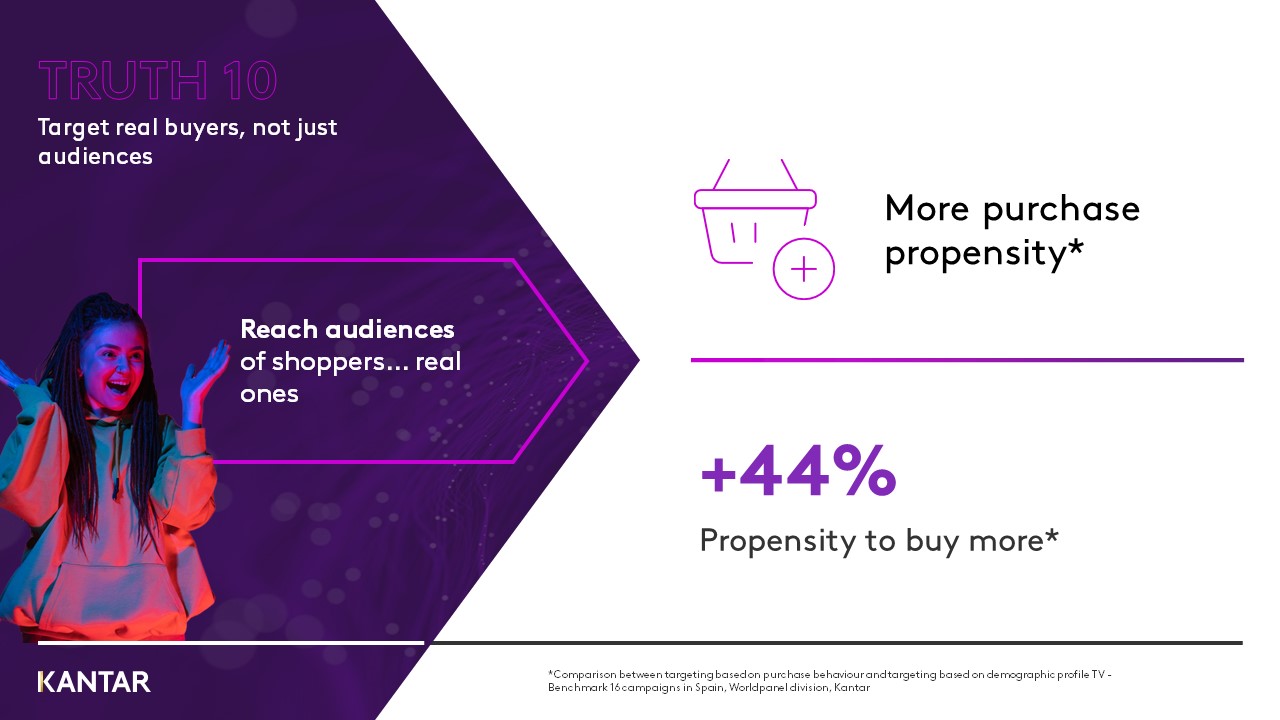Increasing penetration is the most potent growth engine there is. Finding new shoppers has helped 9 in 10 Fast Moving Consumer Goods (FMCG) brands to grow, according to figures from Kantar’s Worldpanel division. Advertising is a highly effective way to expand the buyer base – and focusing on the audiences who will most directly drive sales will optimize the use of shrinking budgets. This can be done by segmenting people based on their real purchase behavior, combined with data on how they consume advertising on TV and digital platforms.
This is known as shopper-based targeting – and there are multiple benefits of taking this approach to reach audiences.
1. Reduced wastage in media spend
Shopper-based targeting helps you avoid reaching audiences who would never buy your brands in the first place. This doesn’t mean narrowing in on small, niche segments; rather, it involves the smarter targeting of specific buyer groups within all of your potential audiences.
2. Increased market coverage
The technique enables you to target the audiences on whose purchase choices you’ll have the most impact. Research from Kantar Worldpanel Analytics shows that segmenting according to socio-demographic groups will on average only help you to reach 43% of heavy or medium buyers.
3. Better sales uplift for TV campaigns
You can build your TV audiences based on the shopper groups that are most likely to buy. Sales generated by TV activity is much greater when households are targeted based on their purchase behavior, than on demographics.

4. Better ROAS (return on ad spend) for TV campaigns
Kantar Worldpanel Analytics’ data shows that audiences segmented based on behavior that are activated by TV advertising return £3.05 for every £1 invested; 27% more than those segmented by demographics.
5. Higher sales uplift for digital campaigns
Again, by building your digital audiences based on the shopper groups most likely to buy you can generate higher sales than with other methodologies.
6. Higher ROAS for digital campaigns
Behavioral-based audiences who are activated digitally return £2.88 for every £1 invested; 20% higher than with other targeting methodologies.
7. Growth against the competition
Shopper-based targeting can successfully drive conversion of shoppers who have typically bought rival brands – bringing in on average 15% more buyers, and also attracting heavier spenders.
8. Strengthened marketing narrative
Creating ‘demand moments’ by reaching audiences who are buyers of adjacent food categories can create a sales uplift 2.9 times above average. Tate & Lyle has given a masterful example of this strategy, taking a step to own 'breakfast moments' by aiming to make its Golden Syrup the go-to breakfast topping for porridge buyers.
9. Growth in brand penetration
Shopper-based targeting can help you reach new audiences who have never bought your brands before, boosting penetration by a potential 19%.
10. Targeting of real shoppers
By targeting actual buyers, you will be reaching those with a higher propensity to purchase; 44% higher, according to Kantar Worldpanel Analytics’ figures.

Talk to our experts about media targeting solutions that will improve your shopper insight and media activation tactics and download the deck for additional information.

